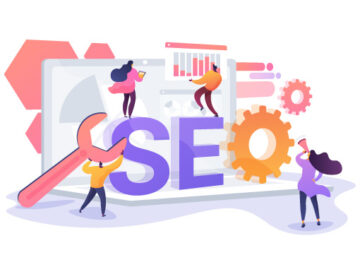Sole sourcing has many benefits, such as less time and money spent making decisions, not having to keep track of a large number of suppliers, and the possibility of getting more value from a closer relationship with a single service provider. But even if the buyer and supplier already have a good relationship, the sole-source process can easily fall apart if the buyer doesn’t set it up and keep an eye on it.
In this article, we will discuss the most important factors to keep in mind for a successful sole souring. Success with sole sourcing depends on many things. The most crucial factors are listed below:
Strengthening the relationship
Although they are essential in any outsourcing partnership, mutual respect, shared interests, dedication, and trust are given more weight in a sole-source scenario. Why? Instead of just getting a basic collection of transactions, buyers turn to sole sourcing to provide collaborative, insights-based solutions.
Buyers do this by being transparent about their intended results and concerns, and by laying a foundation throughout the problem-solving and negotiating processes that is outcomes-focused and value-oriented. Throughout the engagement, this depth of connection has to be fostered. A successful sole source depends on the organizations of the two parties being aligned with the goals.
Engage senior management
Setting the initial objectives for the partnership as it develops is the responsibility of senior leadership from both the buyer and the supplier. They must also keep reinforcing the intended results to their employees throughout the sole sourcing process. These goals will become the norms that govern conduct in all encounters if they are institutionalized. All levels of effort are required for this, and team members who revert to old habits will need some spot coaching to get them back on track.
Request approvals often and early
Boards of directors may object to the notion of sole sourcing given their position as overseers of an enterprise’s operations. The buyer should offer the possibility to its board as early in the process as feasible to minimize delays, extra costs for fact-finding, and even the need to issue an RFP to numerous suppliers.
By using external benchmarking, current market data on suppliers and services, and a full grasp of the value of the existing relationship, the buyer may allay any worries the board may have about the benefit of a competitive process. A prompt affirmation from the board that this merits consideration will prevent a loss of time, assets, funds, and momentum.
Don’t make commitments complex
Time-to-execution of the agreement is one of the main benefits of sole sourcing, so buyers should concentrate on three things during the sourcing process: a strong, solid, and accurate business case that is simple to explain to the organization; assurance through benchmarking and external validation that the service provider, scope, and pricing are competitive in the market and aligned with the desired outcomes; and a strong contract that concentrates negotiations on the most pertinent terms.
Build a strong business case
The buyer’s business case must include the following to win support from senior leadership, the board, and the entire organization: a baseline to show all current service delivery costs; projections for the length of the contract; dynamic modeling for real-time problem-solving; an accounting of direct cost, business, and strategic benefits; and multi-dimensional risk measures.
The company must be made aware of the benefit of the sole source by the business case’s contrast to a competitive approach. The knowledge that results from covering all of these areas must also be presented in a way that is compelling, concise, direct, and unambiguous.
To assure quality, make a comparison
The responsibility for making ensuring that the scope, cost, and value are appropriate rests on the customer. You, as the customer, must be aware of what you expect from the provider’s services and how they will assist you in achieving your objectives. After doing a market comparison analysis, you should collaborate with the provider to establish clear (and measurable) solution objectives while making it apparent that underachieving those criteria might result in the reopening of a multi-provider sourcing process.
Concentrate on the contract and talk about the most crucial issues
The buyer retains control of the decision-making and problem-solving involved in achieving the objective by taking ownership of the engagement process to define clear milestones and goals. This also removes any ambiguity about time, scope, responsibilities, metrics, and targets. But a word of caution: 31 important contractual terms should be discussed during sourcing talks, according to a reputable research firm.











